As VfB Stuttgart gears up for the 2024/25 Bundesliga season and an exciting journey in the UEFA Champions League, the focus is on the club’s recruitment strategy amidst significant changes.
The sale of star striker Serhou Guirassy and the uncertain future of Deniz Undav have stirred up a complex situation in Stuttgart‘s attacking lineup.
Additionally, a record fee for Ermedin Demirovic raises questions about the club’s approach.
Have the Swabians learned from past mistakes, or is this transfer window a risky gamble?
The memories of past high-profile transfers, followed by disappointing seasons, linger in the minds of fans and critics alike.
Names like Ciprian Marica and Pawel Pogrebnyak, expensive flops from yesteryears, resurface as cautionary tales.
Despite these concerns, the club’s recent acquisitions include several free transfers alongside Demirovic, adding depth and potential to the squad.
On the surface, Stuttgart’s strategy might seem like playing with fire.
However, as we will see in this analysis if the plans of Sporting Director Fabian Wohlgemuth and his team even partially succeed, the worries could be unfounded.
The chances of their strategy bearing fruit are promising, particularly in strengthening the offensive line.
This VfB Stuttgart data analysis delves into the statistics of Stuttgart’s transfer moves, evaluating the data of arrivals and departures and exploring how these changes could shape their upcoming season both domestically and in Europe.
History Of VfB Stuttgart
VfB Stuttgart, a club steeped in history and tradition, is a formidable force in German football.
With an impressive list of accolades, including five German Championships, three German Cup wins, and a German Super Cup victory, the club has firmly established itself as a powerhouse in the Bundesliga.
Stuttgart also boasts two titles in the German 2. Bundesliga and two South German Cup victories, highlighting their resilience and ability to bounce back to the top tier.
Currently competing in the Bundesliga for the past five years, Stuttgart holds a notable position in Germany’s first-tier league.
The club’s squad is valued at €244.13 million and consists of 33 players with an average age of 23.4 years.
The team includes 14 foreign players, making up 42.4% of the squad, and features eight national team players, reflecting a blend of domestic and international talent.
The MHPArena Stuttgart, with a capacity of 60,449 seats, serves as their home ground, providing a vibrant atmosphere for their passionate fanbase.
Stuttgart has been shrewd in the transfer market, currently holding a positive transfer record of €27.92 million.
This financial prudence, combined with strategic recruitment, positions the club well for both domestic and international competitions.
As they prepare for the new season, the club’s approach to building a competitive squad will be crucial in their quest for success in the Bundesliga and the UEFA Champions League.
This analysis will delve into Stuttgart’s recent recruitment activities, assessing their potential impact on the club’s performance in the upcoming season.
VfB Stuttgart Transfers (Departures)
As VfB Stuttgart gears up for the 2024/25 season, the club has experienced significant departures, impacting the team’s structure and depth.
These exits, collectively valued at €64.92 million, involve key players who have moved on to new challenges.
One of the most notable departures is Hiroki Ito, a 25-year-old centre-back who transferred to FC Bayern for €23.50 million.
Ito’s defensive prowess and composure on the ball made him vital to Stuttgart’s backline.
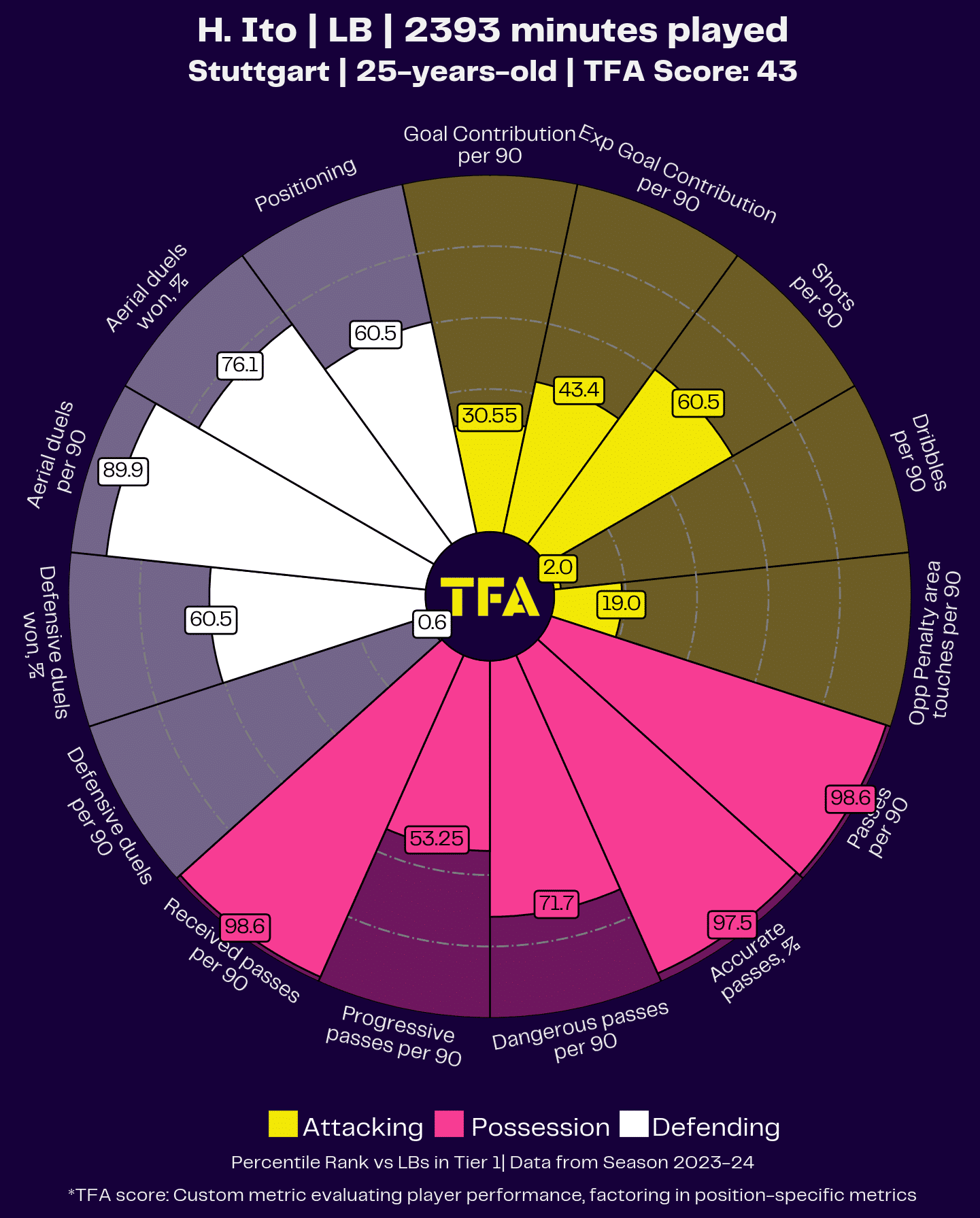
Additionally, Gil Dias, a 27-year-old left winger, transferred to FC Famalicão in Portugal for €920k.
Dias provided width and creativity on the flanks, contributing to Stuttgart’s offensive play.
Another major loss is Waldemar Anton, a 27-year-old centre-back, who joined Borussia Dortmund for €22.50 million.
Anton’s leadership and defensive skills were crucial for Stuttgart, and his partnership with other defenders played a key role in the team’s stability.
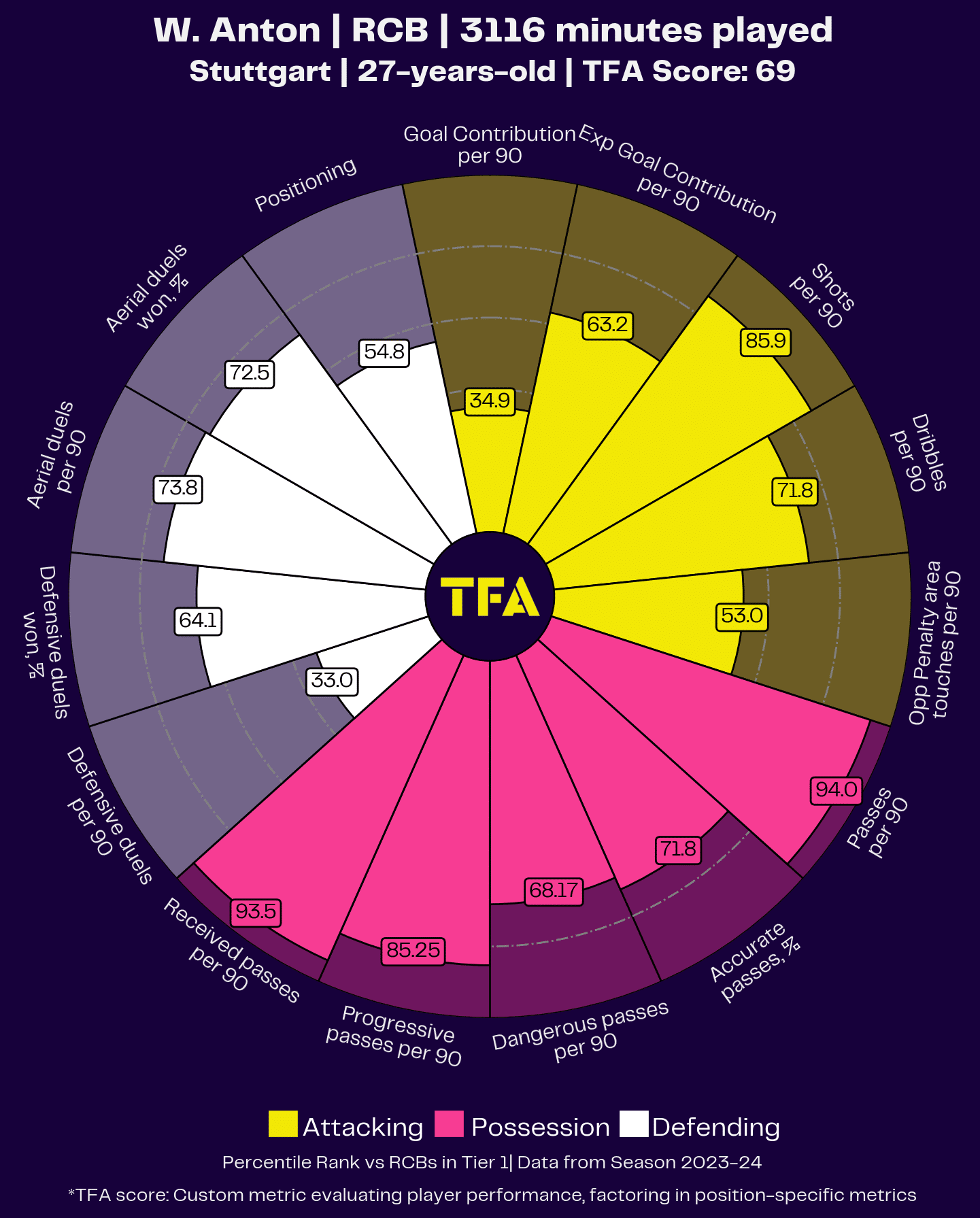
Serhou Guirassy, a 28-year-old centre-forward, also made the move to Borussia Dortmund for €18.00 million.
Guirassy’s ability to score and create opportunities made him a focal point of Stuttgart’s attack. His departure leaves a significant gap in the forward line.
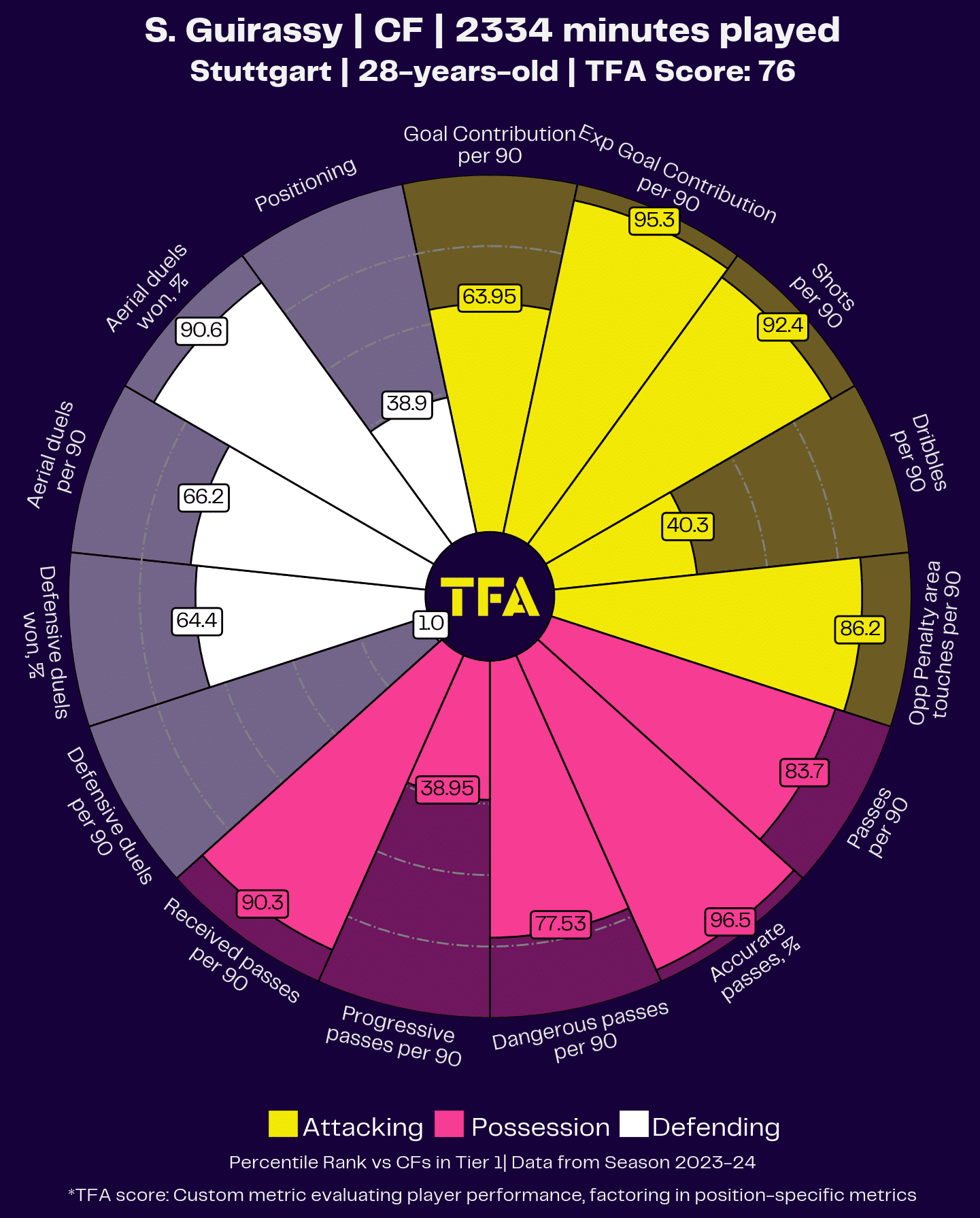
The club also saw several free transfers.
Roberto Massimo, a 23-year-old attacking midfielder, joined SpVgg Greuther Fürth, and Florian Schock, a 23-year-old goalkeeper, moved to Fortuna Düsseldorf.
Both players showed promise and versatility in their respective positions.
Matej Maglica, a 25-year-old centre-back, moved to SV Darmstadt 98, although the transfer fee remains undisclosed.
His departure further depletes Stuttgart’s defensive options.
Juan José Perea, a 24-year-old centre-forward, was loaned to FC Zürich, providing him with an opportunity for regular first-team action in the Swiss Super League.
Laurin Ulrich, a 19-year-old attacking midfielder, joined SSV Ulm 1846 on loan, aiming to gain valuable experience in the 2. Bundesliga.
Lilian Egloff and Genki Haraguchi, both attacking midfielders, have also left the club, with Egloff currently without a club and Haraguchi, at 33, seeking new opportunities.
The average age of these departures is 24.9 years, indicating a mix of youthful potential and experienced players leaving the squad.
The total market value of these departures stands at €148.50 million, reflecting the quality and impact these players had at VfB Stuttgart.
VfB Stuttgart Transfers (New Arrivals)
As the club navigates these changes, the challenge will be to rebuild and strengthen the squad to remain competitive both domestically and internationally.
These new arrivals, collectively costing €37.00 million, have an average age of 22.6 years and a total market value of €90.23 million.
One of the standout signings is Ermedin Demirovic, a 26-year-old centre-forward from FC Augsburg, acquired for €21.00 million.
While he didn’t match Serhou Guirassy’s remarkable 28 Bundesliga goals from last season, Demirovic scored an impressive 15 goals and provided nine assists for a less competitive team.
Known for his willingness to take on difficult tasks, Demirovic often drops deeper to create space for his teammates and delivers expansive passes.
His robust physicality and high work rate, honed under the rigorous training at SC Freiburg with Christian Streich, make him a formidable presence on the field.
However, there is room for improvement in his finishing despite a decent goal tally.
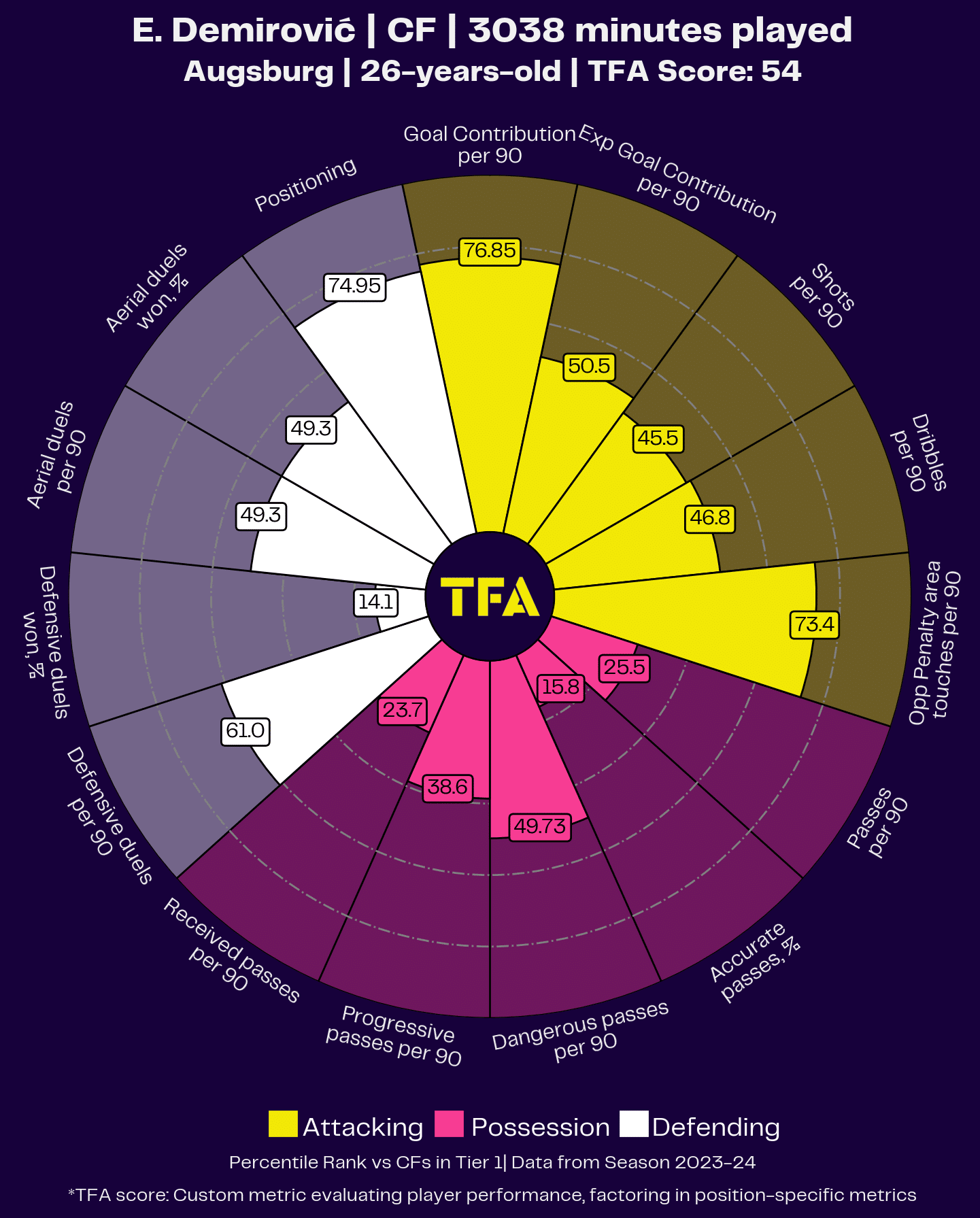
Jamie Leweling, a 23-year-old right winger from Union Berlin, joins for €5.00 million, bringing speed and creativity to the flanks.
At 26, Jeff Chabot, a centre-back from 1. FC Köln was signed for €4.00 million, adding solidity and experience to the defence.
Anthony Rouault, a 23-year-old centre-back from Toulouse, cost €3.00 million and promises to strengthen the backline further.
Leonidas Stergiou, a 22-year-old centre-back from FC St. Gallen, was acquired for €2.00 million, known for his defensive prowess and potential.
Fabian Rieder, a 22-year-old attacking midfielder, joins on loan from Stade Rennais for a fee of €800k, adding creativity and playmaking abilities.
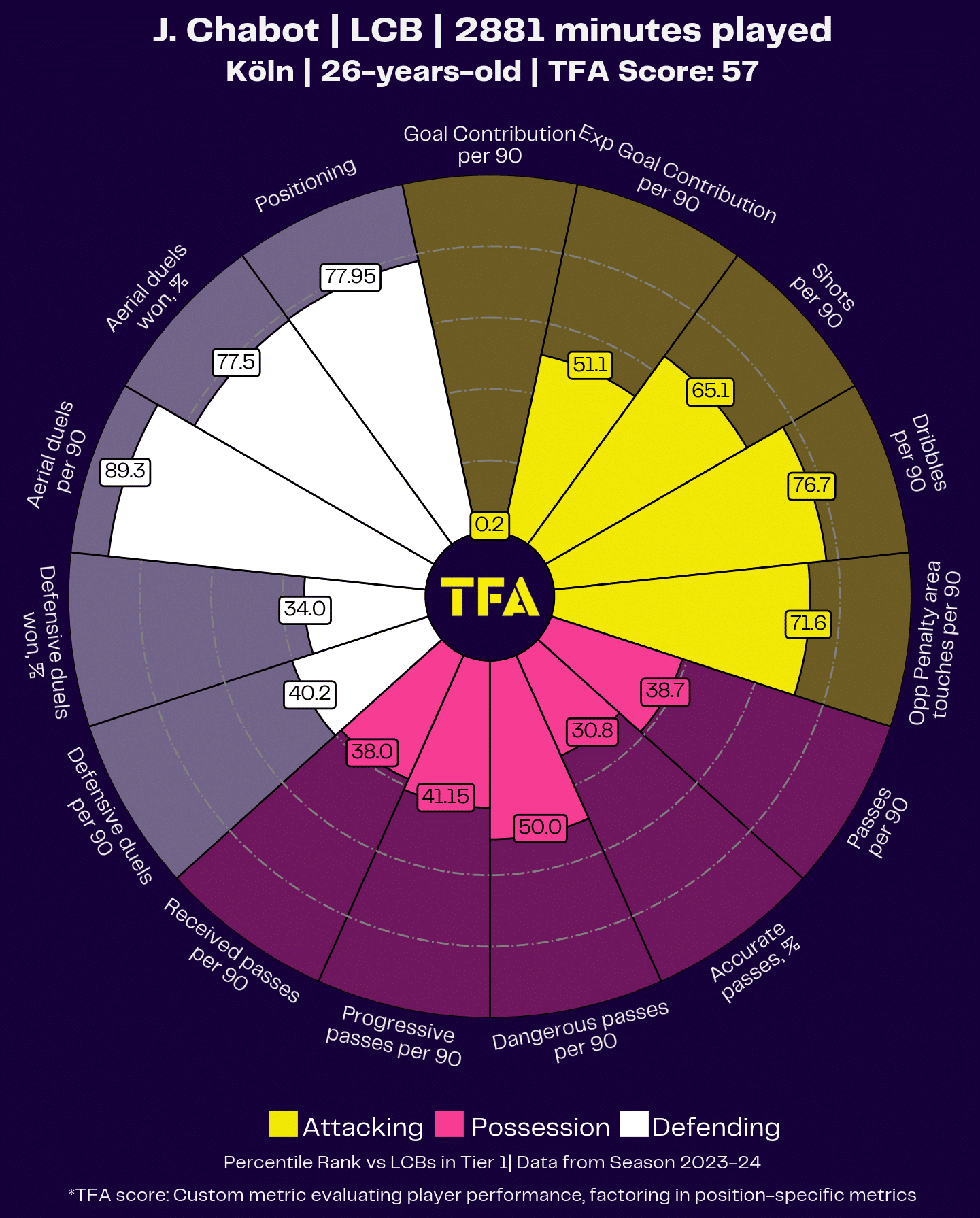
Other notable additions include Ramon Hendriks, a 22-year-old centre-back from Feyenoord, for €700k, and Frans Krätzig, a 21-year-old left-back from Bayern Munich, on loan for €500k.
Yannik Keitel, a 24-year-old defensive midfielder from SC Freiburg, and Nick Woltemade, a 22-year-old second striker from Werder Bremen, both join on free transfers, enhancing the midfield and attack, respectively.
Justin Diehl, a 19-year-old left winger from 1. FC Köln also arrives on a free transfer, bringing youthful energy and potential.
The club has also recalled several players from loan spells, including Wahid Faghir, a 20-year-old centre-forward from SV Elversberg, and Mohamed Sankoh, a 20-year-old centre-forward from Heracles Almelo.
Ömer Beyaz, a 20-year-old attacking midfielder from Hatayspor, and Thomas Kastanaras, a 21-year-old centre-forward from SSV Ulm 1846, return to bolster the squad.
VfB Stuttgart’s recruitment strategy reflects a blend of immediate impact signings and investments in future talent.
The challenge now lies in integrating these new players into the squad to ensure they contribute effectively in the Bundesliga and on the international stage in the UEFA Champions League.
VfB Stuttgart Squad Depth
VfB Stuttgart enters the 2024/25 season with a squad designed to compete on multiple fronts: the Bundesliga, DFB-Pokal, and the UEFA Champions League.
The squad boasts a balance of youth and experience, with a total market value of €244.13 million, indicating substantial depth and potential.
In goal, Stuttgart has solid options with Alexander Nübel, a 27-year-old goalkeeper signed from Bayern Munich, bringing stability and experience.
Backup goalkeepers Fabian Bredlow, Dennis Seimen, and newcomer Stefan Drljaca provide ample coverage, ensuring that the goalkeeping position remains secure throughout a demanding season.
The defence has been significantly strengthened with critical acquisitions.
Centre-backs like Dan-Axel Zagadou and new signings Jeff Chabot, Anthony Rouault, Leonidas Stergiou, and Ramon Hendriks bring a mix of height, strength, and tactical awareness.
With additional depth from players like Anrie Chase and versatile full-backs Maximilian Mittelstädt and Frans Krätzig, Stuttgart’s backline is well-equipped to handle top-tier football’s physical and tactical demands.
VfB Stuttgart’s need for a ball-playing centre-back has become evident following the departure of Hiroki Ito to FC Bayern.
An ideal and affordable solution could be Ravil Tagir, a promising 21-year-old centre-back currently playing for Basaksehir FK in the Turkish Süper Lig.
Tagir possesses impressive statistics in passing and advanced passing, making him adept at building play from the back.
This skill set aligns well with Stuttgart’s tactical approach, which relies on defenders who can initiate attacks and maintain possession under pressure.
His proficiency in ball distribution mirrors that of Hiroki Ito, whose departure left a significant gap in Stuttgart’s defensive lineup.
Despite his strengths, Tagir does have room for improvement in aerial duels. At 1.85 meters, he has the physical presence required for aerial battles but needs to refine his technique and timing to enhance his effectiveness in this area.
Stuttgart’s coaching staff could focus on this aspect of his game, providing tailored training to bolster his aerial prowess and making him a more well-rounded defender.
He represents a cost-effective option for Stuttgart with a contract at Basaksehir FK until 2025 and a market value of €2.20 million.
His tenure in the Turkish Süper Lig and Belgian Jupiler Pro League has seen him develop against quality opposition, and his 22 caps for the Turkey U21 national team indicate his potential and readiness for higher challenges.
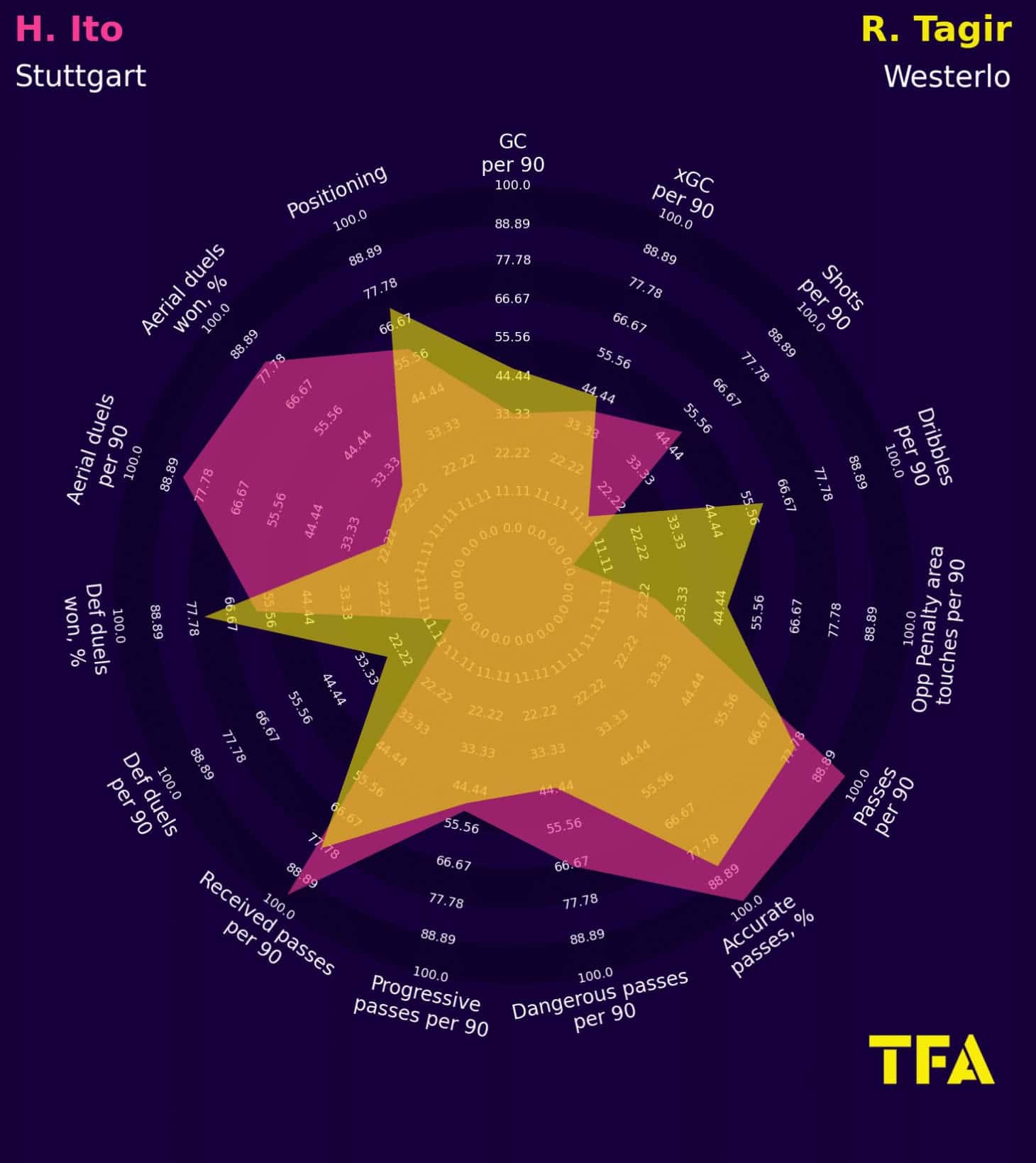
Adding Tagir to Stuttgart’s squad would not only address the immediate need for a ball-playing centre-back but also bring in a young player with significant upside.
His ability to complement the existing defensive roster with his passing skills and potential growth in aerial duels makes him a strategic acquisition.
With Stuttgart competing in the Bundesliga, DFB-Pokal, and UEFA Champions League, depth and versatility in defence are crucial, and Tagir fits this requirement well.
The midfield showcases both defensive resilience and creative flair. Angelo Stiller, Atakan Karazor, and Yannik Keitel provide a strong defensive midfield presence, while Enzo Millot and Fabian Rieder offer attacking creativity.
Woo-yeong Jeong and Chris Führich add dynamism on the wings, with the potential for incisive play and goal-scoring opportunities.
This midfield mix ensures that Stuttgart can adapt to various match scenarios, balancing defence and attack.
In the forward line, Ermedin Demirovic stands out as a crucial signing. Despite not matching Guirassy’s 28 Bundesliga goals last season, Demirovic’s 15 goals and nine assists for a less competitive team highlight his offensive capabilities.
His robust physicality and work rate make him a valuable asset.
Complementing him are young talents like Wahid Faghir, Luca Pfeiffer, Mohamed Sankoh, and Thomas Kastanaras, all of whom provide options for rotation and tactical flexibility.
Conclusion
Stuttgart’s squad size of 33, with an average age of 23.4 years and 14 foreign players, demonstrates a well-rounded team ready for the rigors of three major competitions.
National team players bring additional experience and quality, which is crucial for navigating the high-stakes environment of the Champions League and domestic tournaments.
VfB Stuttgart’s squad depth appears sufficient to compete across the Bundesliga, DFB-Pokal, and UEFA Champions League.
The combination of experienced leaders, promising young talent, and strategic signings equips the team to handle a demanding season’s physical and tactical challenges.
With smart rotation and effective utilization of their deep bench, Stuttgart can aim for strong performances on all fronts.





Comments